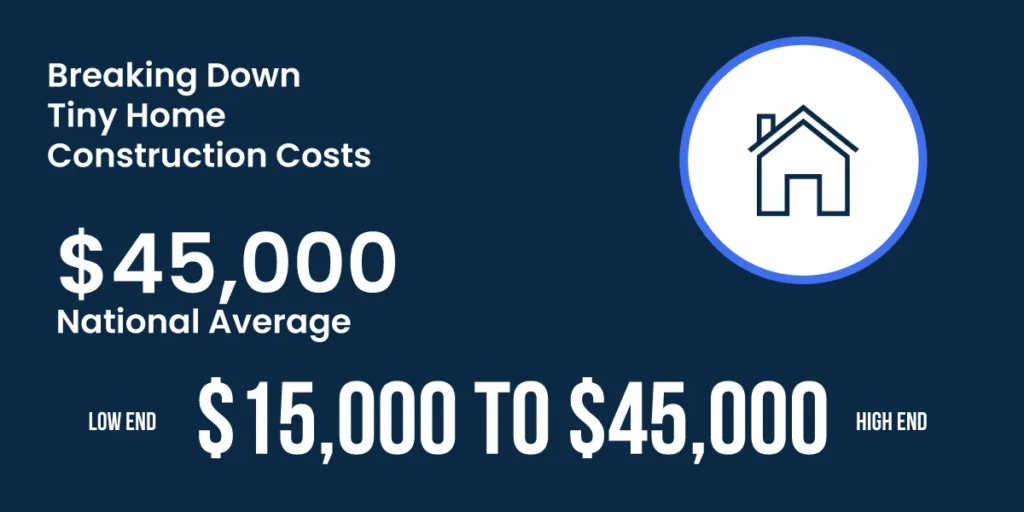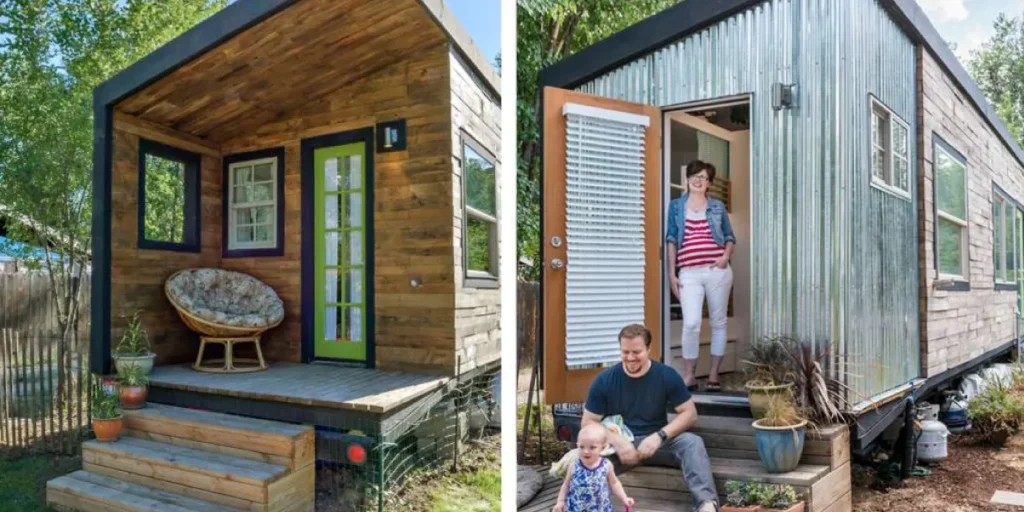A tiny home is a small, efficient living space, typically ranging from 100 to 400 square feet, designed to maximize functionality in a compact layout. This trend has gained popularity due to rising housing costs, and a growing interest in minimalism, and environmental sustainability.
The cost to install a tiny home can vary significantly depending on several factors such as size, materials, and labor. On average, tiny homes can cost anywhere from $30,000 to $100,000 or more, depending on customization and location. Let’s break down the key elements affecting the total cost and offer insights on how to budget effectively for your tiny home project.
Factors Influencing Tiny Home Installation Costs
- Size of the Tiny Home: One of the biggest cost drivers is the size of the tiny home. Larger homes naturally require more materials and labor, increasing the overall price.
- Materials Used: The type of materials used—whether premium or budget-friendly—will significantly influence the total cost. Sustainable or eco-friendly materials, while attractive for long-term savings, tend to come with a higher initial price tag.
- Location and Land Costs: The location where the tiny home will be installed affects land costs, zoning regulations, and permitting fees, all of which impact your total budget. Urban locations often come with higher costs compared to rural settings.
- Labor Costs: Professional labor costs, such as electricians, plumbers, and carpenters, can add up quickly. DIY approaches can significantly reduce these expenses but require specific skills and expertise.
- Permitting and Zoning Regulations: Each area has different regulations that can impact tiny home installation costs. You might need special permits for installation, adding to overall expenses.
Breaking Down Tiny Home Construction Costs

- Foundation Costs: Depending on whether you choose a mobile or permanent tiny home, foundation costs can range from $4,000 to $15,000. Mobile homes may only need trailer supports, while permanent homes may require full foundations.
- Structure and Building Materials: The shell of a tiny home, including framing, walls, and roofing, is one of the most significant expenses. The cost typically ranges between $10,000 to $40,000, depending on the materials and design.
- Plumbing and Electrical Installation: Plumbing and electrical systems are essential but can significantly increase costs. Expect to pay between $2,000 to $8,000 for these systems, depending on whether you’re connected to a grid or going off-grid.
- Interior Finishing Costs: Interior finishes like flooring, cabinetry, and appliances can vary widely based on your preferences. Budgeting $5,000 to $15,000 for these features is a good estimate.
Tiny Home Pricing Based on Type
Prefabricated Tiny Homes or modular tiny homes are generally the most affordable, with prices starting at around $30,000. They are built off-site and delivered, saving on labor costs.
Custom-Built Tiny Homes offer more flexibility in design but come at a premium. Prices can range from $50,000 to over $100,000 depending on the complexity of the build.
DIY Tiny Homes can be a cost-saving option if you have the necessary skills. DIY builds can cost between $15,000 to $45,000, depending on materials and complexity.
Affordable Tiny Home Options
Opting for simpler designs and budget materials can significantly reduce the cost of a tiny home. Basic, no-frills tiny homes can be constructed for as low as $20,000.
Kits that include all the materials needed for assembly can be a cost-effective option, typically ranging from $10,000 to $35,000.
Purchasing a used tiny home can save a significant amount. Prices for pre-owned tiny homes often start around $20,000, depending on age and condition.
Cost Factors for Tiny Home Transportation
Moving a tiny house involves specific costs and considerations different from traditional home moves. Here’s a summary of key factors:
- Move Distance: Longer distances increase costs due to more fuel, labor, and necessary permits.
- Tiny House Size & Weight: Larger or heavier houses may need specialized transport equipment, raising the total cost.
- Tiny House on Wheels vs. Foundation: Houses on wheels are easier and cheaper to move than those on foundations. If moving on existing tires, budget an extra $500-$800 for tire replacement.
- Towing vs. Flatbed Transport: Towing is cheaper at $1 to $3 per mile, while flatbed transport costs $3 to $4 per mile, often requiring additional equipment like cranes or forklifts.
Additional Tiny Home Expenses
The additional costs for a tiny home can vary depending on a few factors. Connecting utilities such as water, electricity, and sewage usually adds between $1,500 and $5,000, depending on your location and how complex the setup is.
If you choose to go off-grid, installing solutions like solar panels or composting toilets can cost anywhere from $2,000 to $10,000, based on how sophisticated the system needs to be. Furnishing and decorating your tiny home can range between $2,000 and $8,000, depending on your personal style and the quality of furniture and appliances you select.
Building a new one or buying a ready-made one?

Not sure if you want to construct or buy? Here are the main differences between building a tiny house and purchasing a tiny house to help you determine which path to take:
Building a tiny house
Building a tiny house allows you to completely choose the size, layout, finishes, and features. For many, DIY is the only option to build a little house that meets their idea.
You can choose how much of the process you want to be involved in and outsource duties that you are not comfortable with. If you want to build but don’t want to do the work, you can rent out the complete tiny house build.
Buying a tiny house
Buying a small house offers a lower price and a shorter move-in time, as well as a lot less work than building your own tiny house, even if you don’t intend to undertake the actual labor yourself.
While there are several varieties of tiny houses, the fundamental difference is whether they are on wheels or on a foundation. When you buy a tiny house on a foundation, it is already on land, whereas a tiny house on wheels requires you to purchase or lease a plot of land to park it on. However, wheels allow you to tow your tiny house wherever you wish.
Conclusion
In summary, moving and setting up a tiny home involves various costs that can add up significantly. From the expense of transporting the home, whether by towing or flatbed, to the costs associated with utilities, off-grid solutions, and furnishing, it’s essential to plan and budget accordingly. Each factor, including distance, size, and transportation method, influences the overall expense. By understanding these costs, you can better prepare for the financial aspects of your tiny home journey and make informed decisions to ensure a smooth transition into your new space.
